一个塑料部件是出生在a factory in China. Its life expectancy is roughly two human years. By the time it retires to a tropical island—the beautifulGreat Pacific Garbage Patch—or is laid to rest at the New York city dump, it will have crossed one ocean by air and two countries by truck, thrice-repackaged.
At every junction in the life cycle of one plastic widget, there is a choice. Heads or tails? Each choice is one of trillions that can form one massive effort to conserve resources, protect the environment, and slow down the impact of consumerism. Or, they can buy us all a one-way ticket to the island of plastic.

photo:Shopify Store,Planet Love Life
I should preface this lecture of sorts, with an admission: I also have room to improve.
When I was ten, my friend and I designed posters by hand—environmental PSAs that we posted around our school. Smiling lopsided planets, personified green hearts, pleading trees with outstretched branch arms. It was 1989 and the year that earth-friendliness crossed my sheltered path. I threw myself, and my pencil crayons, behind the cause. Back then “saving the planet” was a simple formula, we were told: REDUCE, REUSE, RECYCLE.
Our elementary attempts at crusading for the earth were misguided and oozing with irony: the paper was virgin, and it undoubtedly ended up in the landfill. (Exceptthis one.)
More than 25 years later, I’m sitting here in fast fashion pants, browsing online car reviews. I still don’t have all of the answers.
A bit of history
Recyclingdates as far back as 1031when, in Japan, recycled waste paper was first documented. In the 1930s and 1940s, nylon, rubber and metal were rationed and recycled as part of the war effort.
Then in the 50s, the economy boomed, the planet seemed abundant with resources and cherry soda floats, and we lost our way.

image:Elle Decor / Veterans United
You mean landfills actually get, err, full? Oops.
Earth Daydebuts in 1970, hand-in-hand with mounting global environmental awareness, and seven years later, the UN discusses, for the first time, the subject of the ozone layer. Recycling programs ramp up into the next decade, with over 1000 US cities offering curbside pick-up by 1988. Germany, however,made a move that would forever impactour thinking:in 1992, they shifted the responsibility of the material life cycle from the consumer to the manufacturer.
In the late 90s and 2000s, as eco-friendly became more fashionable – not restricted to tireless tree-hugging advocates and passive curbside recyclers – companies cashed in on the buzzwords, slathering packaging with green marketing claims that attracted misinformed but well-meaning consumers with the promise of good-deed-doing.
Today, the consumer-duping still happens, but we’re all getting wise togreenwashing, and legislation around eco claims and labeling are tightening. Lawmakers are stepping up to the plate, andgreen innovationsurges on.
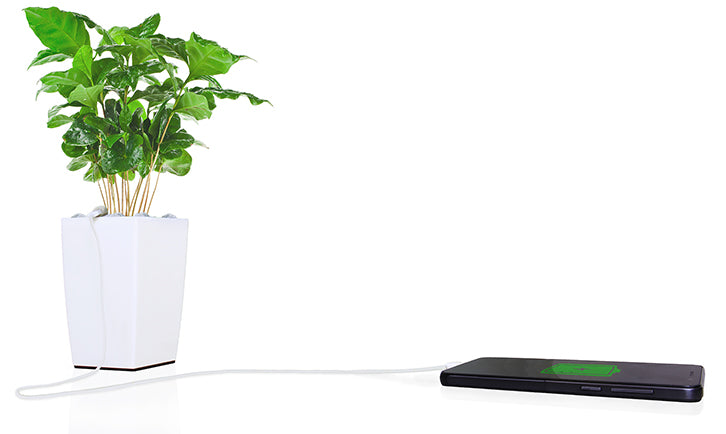
photo:Bioo plant phone charger, via Product Hunt
Looking ahead
Arecent reporton the State of Green Business identifies the following trends: circular economy, green infrastructure,carbon recycling,microgrids, and a B2B sharing economy.
“Another is the growth of the "blue economy" — the newfound focus on the business of oceans, from mapping and mining to stewardship and "smart sailing" initiatives for the shipping industry. There’s a cottage industry emerging in turning ocean plastics into materials, transforming a pollutant into a product. And growing attention to sustainable fishing, including the human rights aspects of the commercial fishing industry.”

image: Circular Economy, viaEuropean Commission
Green marketing: Greening your business
Back in the day, technology and availability made it difficult to throw weight behind the green effort, proving too detrimental to some small businesses’ profit margins. Now: there’s really no excuse. Simplyupdating lighting in your office or retail spacecan have a massive impact on energy consumption.
Here’s the truth, though: not everyone is actually motivated by planet-preservation. I know you’re out there, brazenly tossing glass bottles into the trash. If I’ve held your attention this far, somehow, I encourage you to read on. For you, I will appeal to another motivation: your bottom line. Having an environmental strategy for your business can actuallysave you moneyin energy costs, and potentially qualify you fortax breaksandgovernment funding and incentiveprograms. Speaking your language now?
An environmental strategy for your business is good the earthandyour bottom line.
In this post, we'll dive into quick, green ways to level up in four areas of your business. Plus, get inspired by 18 Shopify stores racking up some serious good karma:
Product
Whenchoosing a product to sell, there are other questions to ask yourself in addition to market fit and current trends: can it be produced using sustainable or recycled materials? Can you source ingredients that are organic or cruelty-free?
Where to start:
- Connect with local farmers via anorganic farmer directory
- Be accountable and honest – understandgreen labeling, andapply for certifications
- Locatesustainable suppliers and materialsin your area
领导:
Sustainable materials
Yoloha Yogamats are made from cork: a natural, renewable, and recyclable material obtained through a sustainable harvesting method. The trees are stripped by hand every 9 years, rather than cut down.
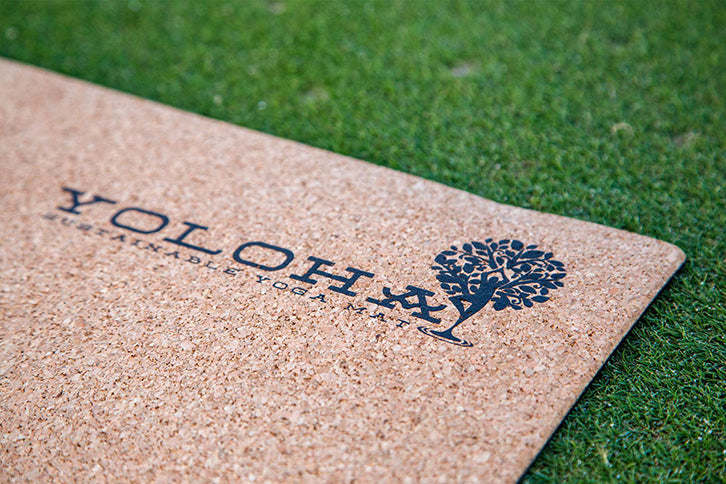
Organic ingredients
I can personally vouch for the Coffee Bean Eye cream by100% Pure. Its pure plant-based ingredients are literally good enough to eat.

photo:Wellness Wallflower
Animal-friendliness
The cause droveVaute Couture's founderto build her cruelty free brand, and in the process she designed her dream winter dress coat, warm enough for her native Chicago winters, and vegan to boot.
回收和再利用的材料
Dick Mobysunnies are produced using recycled acetate, and the microfibre cleaning cloths from recycled PET bottles.
Jake is a former firefighter and founder ofRecycled Firefighter. His company repurposes retired fire hoses into durable accessories, AND donates a portion of proceeds to support burn victims.
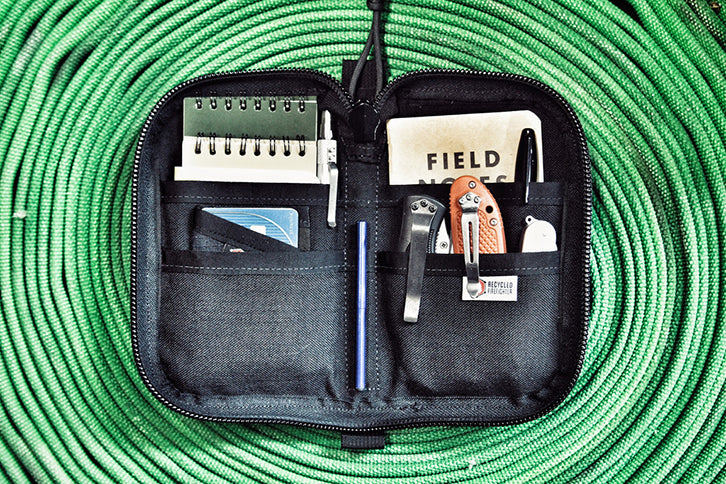
Manufacturing and sourcing
Producing locally or at least in America isn’t cost-effective for a lot of business models, but not all overseas manufacturers are created equal. Consider working directly with factories to stay connected to the conditions and wages, empower communities by working with fair trade co-ops, and support small family producers.
Where to start:
- Source US-based makers and manufacturers viaMaker’s Row
- Learn about how your business can supportfair trade practices and programs
- Band together with other businesses in your industry –participate in group initiativesthat work towards sustainability
- Rethink yourshipping strategy
领导:
Locally produced
Helm Bootsare made proudly in the US, and as a bonus, Helm will re-sole your boots, keeping them out of the landfill for life.

Ethically manufactured
Ethnotek Bagssustain employment in hand printing, weaving, and embroidery with partnering artisan villages in Ghana.
Supporting small Producers
Commitment to supporting small producers is baked intoFarm to People’s business plan. All products are made from real food, produced by real people.
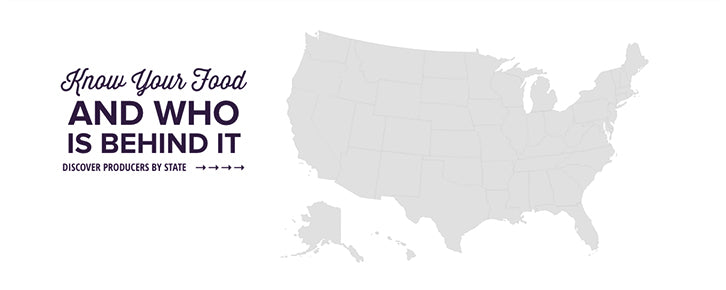
Fairtrade sourcing
As a member of the Fair Trade Federation,From the Earthpartners with small workplaces around the world that provide safe work environments and pay fair wages.
Operations
This is an area full of low-effort wins for businesses looking to rack up some green karma quickly and cheaply. Some of it may even cut your overhead. How is your office or warehouse lit and heated? Can you swap out wastefulpackaging materialsfor PCW alternatives?
Where to start:
- Get an official energy audit (links for:USandCanada) to assess areas for improvement, andcalculate your carbon footprint
- Consider green alternatives foroffice suppliesandpackaging
- Be accountable for the full life cycle of your products – implement a refill orreturn program
- Make simple upgrades to your office, warehouse or retail spaces: replace lightbulbs, bottled water, and cleaning products with responsible alternatives
领导:
Energy Conservation
Serial entrepreneur Taylor Banks runsseveral businessesfrom his RV, powering everything with solar panels.
Waste Reclamation, Recycling & Refill Programs
Buy someNice Laundrysocks and send back your old ones! The company works with 2ReWear Inc. to repurpose socks as textiles or insulation.

Natural cleaning and beauty product company,Common Goodis cutting back on plastics by offering a refill program at several locations across Canada and the US.
Water Conservation
Steam Whistle Brewingis transparent about their commitment to protecting natural resources, implementing water-saving equipment and staff education programs.
Social responsibility
So you’re making plastic widgets in China. Maybe your manufacturing and shipping methods are rigidly anti-planet. Consider donating back to causes close to your heart or purchasing carbon offsets. Aligning your business with charityisn’t just good for the soul.
Where to start:
- Install Shopify apps likeCarbon CheckoutorOne Tree Planted
- Command+Z –purchase carbon offsetsto balance your impact
- Work with an charity partneror use a Shopify app likei=Change
领导:
Giving Back
Little gum, big impact.Project 7works with non-profit partners to support seven areas of need with each sale of a pack of their gum.

Job creation and community support
Rebel Nellwas created with the purpose of employing, educating, and empowering disadvantaged women in Detroit’s homeless shelters to help them move from a life of dependence to one of self-reliance.
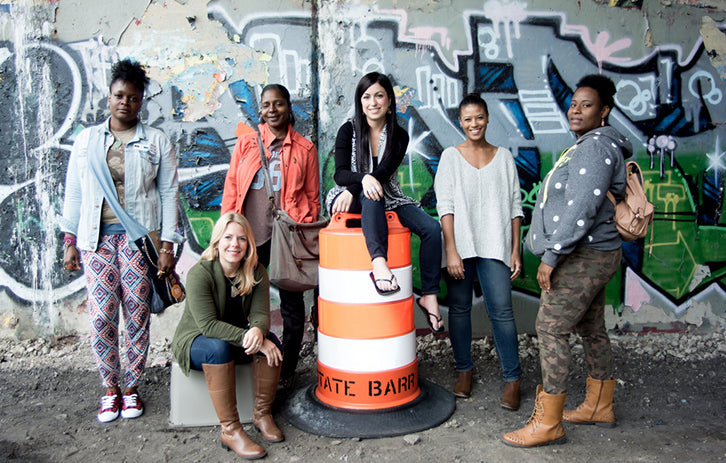
Avenue Fair Tradeemploys talented artisans with disabilities, providing vocational and skill development opportunities.
Carbon offsetting
CertainWildlife Worksgarments are made carbon neutral with credits created through their involvement inREDD+ projects.
Partnering with charity
ThePure Fix X charity: waterpartnership donates $100 for the sale of two special edition bikes to water causes in developing countries.

We want to hear from you—share your business’ green initiatives in the comments below.

